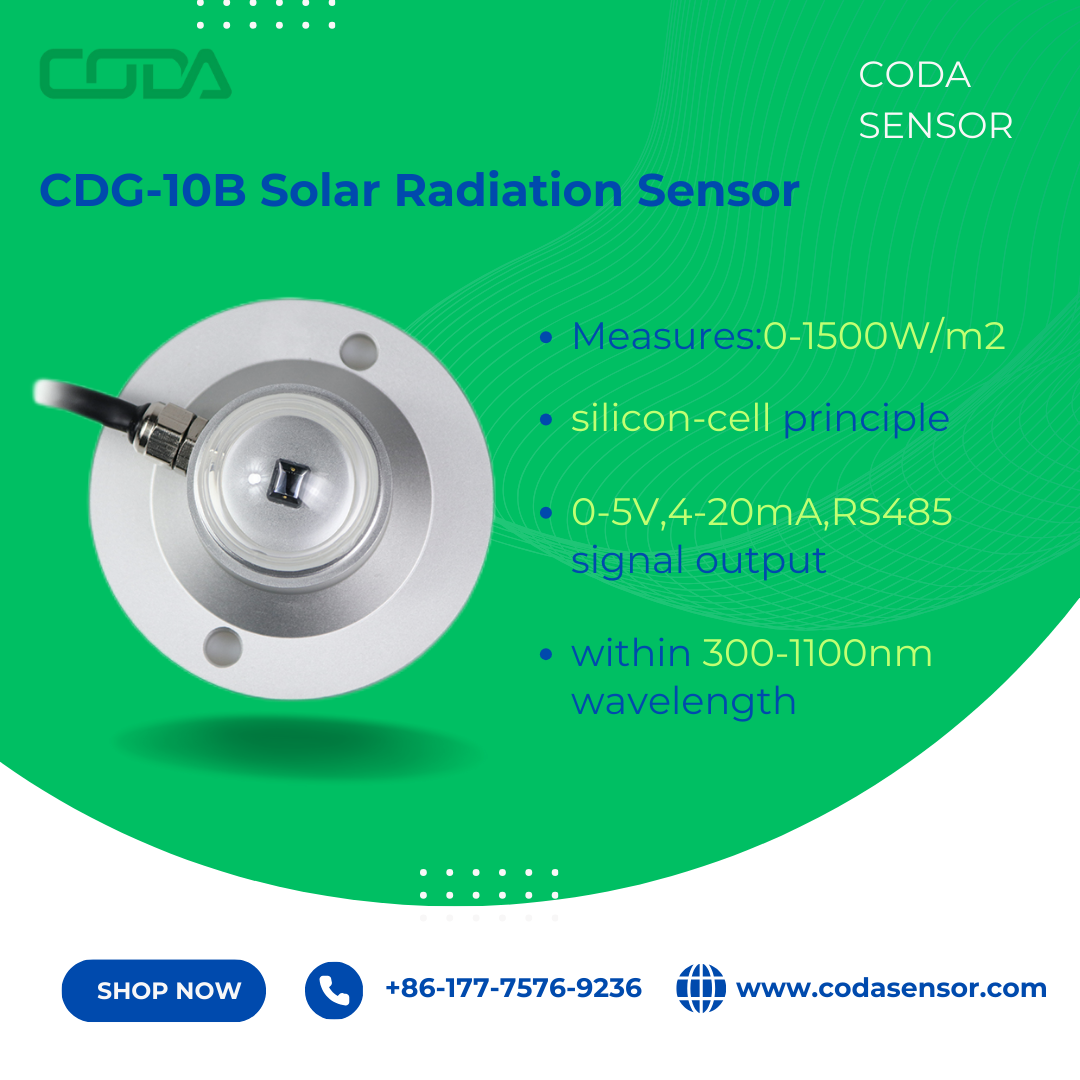In today's rapidly evolving fields of environmental monitoring and renewable energy, the demand for accurate and reliable data is paramount. The CDG-10B Solar Radiation Sensor, a high-quality pyranometer, stands out as a critical component for any comprehensive weather station. This sensor is engineered to measure solar radiation with exceptional precision, providing the foundational data required for a wide range of applications, from meteorological studies to optimizing solar power generation.
A truly effective professional weather station is more than a single device; it's a seamlessly integrated network of sensors. The CDG-10B is an essential part of this network, working alongside other weather station sensors to provide a complete picture of atmospheric conditions. It measures total solar radiation, a key parameter for understanding local climate and energy potential.
The primary features of the CDG-10B that make it an ideal choice for a smart weather station include:
Silicon-Cell Principle: This technology ensures the sensor's durability and high sensitivity. With no moving parts, the sensor is robust, requires no maintenance, and delivers consistent performance throughout its long service life.
High Precision: The sensor boasts a resolution of
Versatile Output: Offering analog outputs like 4-20mA and digital interfaces like RS485, the CDG-10B can be seamlessly integrated into various data loggers and monitoring systems, making it a versatile tool for any setup, including a full-fledged wireless weather station.

The versatility of the CDG-10B extends its use beyond meteorology, covering multiple industries from agriculture and energy to architecture and scientific research.
In modern agriculture, light is a core element for plant growth and yield optimization. The CDG-10B serves as an agricultural light sensor, accurately measuring Photosynthetically Active Radiation (PAR) to help farmers and researchers develop more scientific planting strategies.
Case Study: A large-scale greenhouse utilized the CDG-10B sensor to monitor real-time solar radiation levels. When light levels fell below a set threshold, the automated control system would activate supplemental grow lights, ensuring the plants were always in optimal growth conditions. As a result, the greenhouse's vegetable yield increased by 15% while also managing energy consumption more efficiently.
In the solar industry, a precise solar irradiance sensor is crucial for assessing site potential, monitoring system performance, and optimizing energy output.
Case Study: At a large photovoltaic power plant, engineers installed multiple CDG-10B sensors across different solar panel arrays. By comparing the real-time irradiance data from the sensors with the actual power generation of the panels, they could quickly identify underperforming panels or detect potential shading issues. This data-driven maintenance approach helped the power plant increase its overall generation efficiency by 8%, significantly boosting revenue.
Understanding solar radiation on building surfaces is an important part of evaluating building energy consumption, designing passive solar systems, and studying the urban heat island effect.
Case Study: A building design firm, working on a green building project, installed CDG-10B sensors on different facades and the rooftop of their architectural model. By collecting data over a full year, they obtained detailed solar radiation information for the building across different seasons and times of day. This provided a scientific basis for optimizing window orientation, selecting insulating materials, and designing natural lighting solutions.
The CDG-10B is widely used in climate science, ecology, and environmental studies to measure surface radiation flux, study the impact of atmospheric pollutants on solar radiation, and evaluate climate change.
Case Study: A university research team established a portable weather station in a remote area, with the CDG-10B as a core component. They used the data collected by the sensor to analyze the effect of deforestation on surface solar radiation reflectivity, providing valuable scientific data for local ecological conservation policies.
With its compact design and easy installation, the CDG-10B is suitable for a variety of configurations:
Mini Weather Station: The CDG-10B can be integrated into a compact mini weather station for small-scale or personal use.
Portable Solutions: Its lightweight and durable design make it an ideal component for a portable weather station or a dedicated portable solar radiation meter, allowing for on-site measurements and field research.
Integrated Systems: When combined with an anemometer (for wind speed) and a rain gauge sensor, the CDG-10B can form a powerful 7-in-1 weather station for comprehensive environmental monitoring.
By providing accurate, real-time data, this pyranometer is an indispensable instrument for anyone looking to understand and harness the power of sunlight. Whether for a simple outdoor weather station or a complex industrial system, the CDG-10B is the key to actionable insights.
Learn how CODA Sensor solar radiation and PAR se
Discover how real-time weather station data impr
Discover how Automatic Weather Stations (AWS) ar
Contact: Molly
Phone: +86-17775769236
Tel: 86-0731-85117089
Email: molly@codasensor.com
Add: Building S5, Aux Square, Yuelu District, Changsha City, Hunan Province, China
We chat